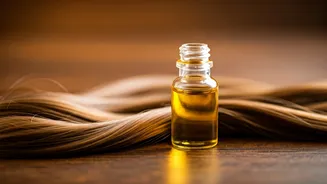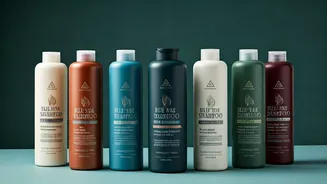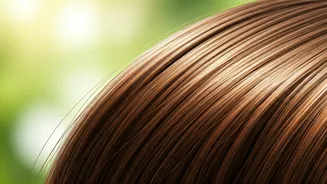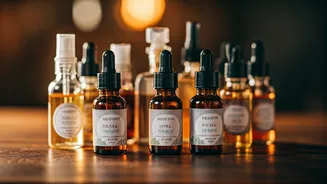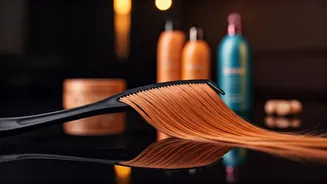Sulfate-Free Shampoo
Switching to a sulfate-free shampoo is a great starting point for improving hair health. Sulfates, which create a rich lather, can strip away natural oils,
leading to dryness and potential damage. Opting for a sulfate-free alternative helps maintain moisture balance and preserves your hair's natural luster. These shampoos typically cleanse hair gently while preserving its natural oils. They are especially beneficial for color-treated or dry hair, making them a cornerstone for healthier hair.
Dry With Care
The way you dry your hair profoundly impacts its health and appearance. Rubbing hair vigorously with a towel causes friction, leading to breakage and frizz. Instead, gently squeeze excess water with a microfiber towel or soft cotton t-shirt. Let your hair air dry whenever feasible to avoid heat damage from blow dryers, or use a diffuser on a low heat setting to reduce impact. This careful approach helps retain moisture and prevents damage, enhancing hair's natural texture.
Refresh Between Washes
Maintaining freshness between washes is a crucial element of a healthy hair routine. Over-washing strips away essential oils, leaving hair dry and brittle. Dry shampoo is a useful product here, helping to absorb excess oil and give hair a fresh boost. Focus application on the roots, allowing it to absorb oils before brushing it through. Doing this extends the time between washes and helps maintain your hair's natural oils. This technique is especially useful for maintaining volume and keeping your hair looking clean.
Detangle The Right Way
Proper detangling is vital to avoid breakage and preserve hair health. Start detangling from the ends and work your way up to the roots. Use a wide-tooth comb or a detangling brush specifically designed for this purpose. Always detangle gently, especially when your hair is wet, as it is more vulnerable at this point. Using a detangling spray or conditioner can provide slip, making the process smoother and reducing friction. Regular and gentle detangling prevents knots and breakage, preserving the natural strength of your hair.
Nighttime Protection
Protecting your hair overnight can make a big difference in maintaining its health and reducing damage. Sleeping on a satin or silk pillowcase can significantly minimize friction compared to cotton, reducing tangles and breakage. Alternatively, consider loosely braiding your hair or putting it in a loose bun before bed. These methods help to prevent knots and keep your hair smooth while you sleep. These simple steps contribute to reducing morning frizz and breakage, allowing your hair to retain moisture overnight.
Moisture Is Everything
Maintaining adequate moisture is crucial for healthy hair. Hydrated hair is less prone to breakage, has more shine, and feels softer. Regular use of moisturizing conditioners and hair masks is recommended. Look for products containing ingredients like argan oil, shea butter, or hyaluronic acid, which are known for their hydrating properties. Adjust your routine to the specific needs of your hair type – the drier your hair, the more frequent the use of these treatments should be. Adequate moisture helps maintain elasticity and strength and gives hair a healthy appearance.
Trim Often + Avoid Heat
Regular trims and limiting heat styling are essential for long-term hair health. Trimming split ends prevents them from traveling up the hair shaft, which causes more damage and breakage. Aim for a trim every 6-8 weeks, depending on your hair's condition and growth rate. Minimizing the use of heat styling tools like hair dryers, straighteners, and curling irons also significantly helps. If heat styling is necessary, always use a heat protectant spray to minimize the damage. These practices keep your hair healthy and maintain its natural shine, making it less prone to split ends and breakage.






